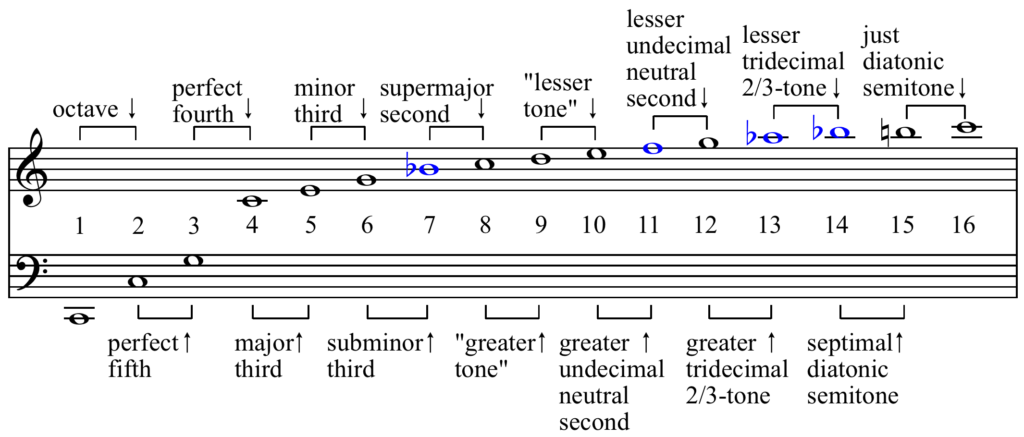
Overtones are an important aspect of the sound of a piano (or any other musical instrument), as they contribute to the richness and complexity of the tone. These overtones are produced because the string is not a simple, uniform object. Instead, it has many different modes of vibration that can be excited when the string is played. Each mode of vibration produces a different frequency of sound wave, and the combination of all these frequencies creates the overall sound of the piano note.
When you play a note on a piano, such as a low C (“C1”), the string that corresponds to that note vibrates and produces a sound wave that travels through the air and into your ears. However, that string does not vibrate in isolation – it also produces additional vibrations at higher frequencies, which are known as overtones or harmonics. From the diagram below, the next few overtones obtained from playing C1 can be seen.

The relative strength and presence of different overtones can vary depending on the design of the piano, the quality of the strings and other components, and the way the piano is played. This is often why some pianos are described as “mellower” (weaker higher overtones) or “brighter” (stronger higher overtones).
Understanding the overtone harmonic series can also help a pianist create different touches on the piano by manipulating the way in which they play the keys. By using different techniques such as varying the force of the fingers on the keys, adjusting the speed of the release of the keys, or controlling the duration of the notes, a pianist can produce different harmonic overtones and create a range of tonal colors. This allows a pianist to create subtle nuances in the sound that can convey different emotions and moods.
Overall, overtones are an important aspect of the sound of a piano, and understanding how they work can help you appreciate the complex and nuanced nature of this beautiful instrument.


Pingback: The differences between a Digital Piano, an Upright Piano, and a Grand piano. – EdFang Piano Studio